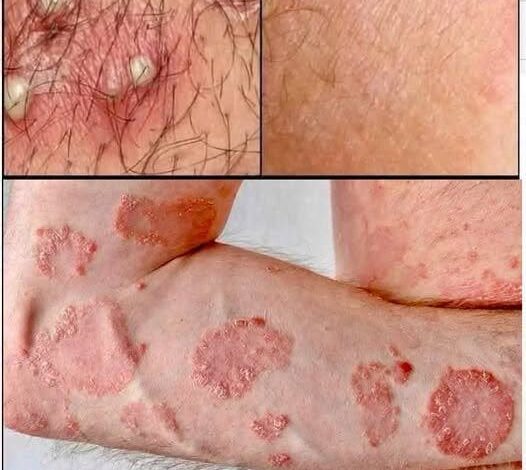Complete Guide to Groin Skin Health: Common Conditions and Effective Treatment Solutions

Understanding Groin Area Dermatological Health Concerns
Groin area skin irritation represents a common dermatological concern affecting individuals across all demographics and age groups. The unique anatomical characteristics of this region, including warmth, moisture retention, and limited air circulation, create optimal conditions for various skin health complications that require specialized care and treatment approaches.
Understanding the underlying causes, recognizing symptoms early, and implementing appropriate treatment strategies becomes essential for maintaining optimal skin health and preventing complications that could impact quality of life and personal comfort.
Ingrown Hair Management and Prevention Strategies
Ingrown hairs develop when hair follicles redirect growth patterns, causing hair to curve back into surrounding skin tissues rather than emerging naturally from follicle openings. This dermatological condition frequently produces inflamed, pimple-like bumps that can become infected without proper treatment intervention.
Primary contributing factors include aggressive shaving techniques, hair removal methods like waxing or plucking, friction from tight-fitting clothing, and naturally coarse or curly hair textures that predispose individuals to follicular complications.
Treatment approaches focus on reducing inflammation through warm compress applications, utilizing gentle exfoliating cleansers to remove dead skin accumulation, and temporarily discontinuing hair removal practices until healing occurs. Severe cases may require professional dermatological consultation for specialized treatment protocols.
Folliculitis Treatment and Bacterial Infection Management
Folliculitis represents inflammatory conditions affecting hair follicles, typically resulting from bacterial infections, fungal overgrowth, or mechanical irritation. This skin condition manifests as red or white-headed pustules surrounding individual hair follicles, often accompanied by discomfort and localized inflammation.
Common causative factors include Staphylococcus aureus bacterial infections, friction from restrictive clothing, aggressive hair removal techniques, and exposure to contaminated water sources including inadequately sanitized recreational facilities.
Effective treatment protocols involve thorough cleansing with antibacterial soap formulations, topical antibiotic ointment applications, and warm compress therapy to promote healing. Persistent or severe infections may necessitate oral antibiotic prescriptions under medical supervision.
Fungal Infection Treatment and Jock Itch Management
Tinea cruris, commonly known as jock itch, represents a prevalent fungal infection affecting the groin region, inner thighs, and buttocks areas. While more frequently observed in males, this dermatological condition can affect anyone, particularly in warm, moisture-rich environments that promote fungal proliferation.
Contributing factors include excessive perspiration, non-breathable synthetic clothing materials, sharing personal hygiene items, and inadequate hygiene practices that create favorable conditions for fungal growth and transmission.
Treatment strategies center on topical antifungal medications such as clotrimazole or terbinafine, maintaining dry skin conditions, avoiding shared personal items, and wearing loose-fitting, breathable cotton undergarments to prevent moisture accumulation and support healing processes.
Contact Dermatitis Identification and Allergic Reaction Management
Contact dermatitis occurs when skin tissues react negatively to allergens or irritating substances, including synthetic fabrics, harsh detergents, fragranced products, or chemical additives in personal care items. This inflammatory response can significantly impact comfort and skin health without proper identification and management.
Common triggers include allergic reactions to synthetic materials, prolonged exposure to moisture and perspiration, unwashed clothing containing detergent residues, and personal care products containing harsh chemicals or artificial fragrances.
Management approaches involve eliminating known allergens and irritants, using fragrance-free moisturizing products, applying hydrocortisone cream for symptom relief, and consulting dermatological professionals for persistent or severe reactions requiring specialized treatment protocols.
Intertrigo Prevention and Skin Fold Care
Intertrigo develops in skin fold areas where friction, moisture accumulation, and poor air circulation create inflammatory conditions. This dermatological concern particularly affects the groin region due to anatomical characteristics that promote moisture retention and limited ventilation.
Primary contributing factors include excessive perspiration, mechanical friction between skin surfaces, weight-related skin fold development, and restrictive clothing that prevents proper air circulation and moisture evaporation from affected areas.
Treatment protocols focus on maintaining dry skin conditions using antifungal powders, applying protective barrier creams containing zinc oxide, and addressing secondary infections with appropriate antifungal or antibacterial topical treatments as needed.
Comprehensive Skin Health Prevention Strategies
Effective prevention requires implementing comprehensive hygiene practices and lifestyle modifications that address underlying risk factors. Proper hair removal techniques using clean, sharp razors with appropriate shaving products significantly reduce irritation and infection risks.
Clothing selection plays a crucial role in prevention, with breathable cotton materials and loose-fitting garments promoting air circulation while reducing friction and moisture accumulation that contribute to various skin health complications.
Daily hygiene practices including thorough cleansing and complete drying of affected areas, particularly after physical activity or excessive perspiration, create unfavorable conditions for bacterial and fungal growth while supporting overall skin health maintenance.
Professional Medical Consultation and Treatment Guidelines
While many groin area skin conditions respond well to conservative home treatment approaches, certain situations require professional medical evaluation and specialized treatment protocols. Persistent symptoms lasting beyond two weeks, severe pain or swelling, pus formation, or systemic symptoms including fever warrant immediate medical attention.
Rapidly spreading rashes or frequently recurring conditions may indicate underlying health concerns or treatment-resistant organisms requiring prescription medications or specialized therapeutic interventions available only through healthcare providers.
Long-Term Skin Health Management and Quality of Life
Maintaining optimal groin area skin health requires consistent attention to prevention strategies, early symptom recognition, and appropriate treatment implementation when conditions develop. Understanding common dermatological concerns enables informed decision-making about when to pursue home treatment versus professional medical consultation.
By implementing comprehensive prevention strategies including proper hygiene practices, appropriate clothing choices, and careful hair removal techniques, individuals can significantly reduce their risk of developing uncomfortable and potentially serious skin health complications while maintaining optimal comfort and quality of life.